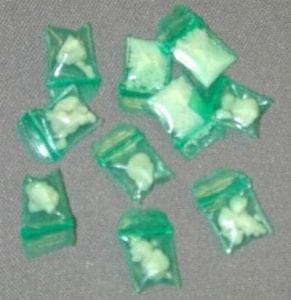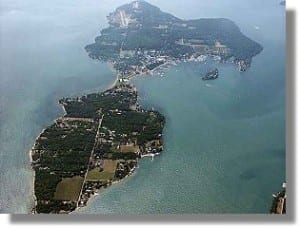
This is another installment in my “A Deeper Look” series peeling back the layers of Outside In to better understand the meaning of the setting, themes, characters, plot, and style.
In creating Outside In I envisioned a cross between The Catcher in the Rye and Fear and Loathing in Las Vegas. Whereas Catcher is about how to enter adulthood without losing oneself and Fear and Loathing deals with finding the American Dream by destroying and abusing the symbols of American consumerism, Outside In proposes identity can’t be found or fabricated but emerges from within when one has the courage to let go.
This letting go for many of the characters in Outside In translates to a hedonistic pursuit involving alcohol, sex, and drugs, the vices so readily available to a person who wants to forget. These vices symbolize the modern trials people face in their journeys of becoming. What starts as recreational experimentation and the exploration of new experiences transform to obsession and complete loss of self. This descent into excess and instant gratification is meant to raise awareness of current societal issues with addiction and self-medication and pose the question, At what point do the tools we use in our journey become the focus of our search?
Watching the characters react with immaturity and irresponsibility to deal with their lives is often frustrating and uncomfortable in the story. This is intentional and meant to represent what psychologist Erik Erikson referred to as a “Quarter Life Crisis”. Erikson theorized when events transpire to thwart the development of intense, intimate relationships for those in their twenties and early thirties, an identity crisis ensues triggering doubt of the life decisions made and the steps to take going forward, inducing feelings of betrayal, isolation, and loneliness. Related to the Quarter-Life Crisis, the characters’ actions are also meant to draw attention to the delayed rites of passage so prevalent in modern culture. With the abundance of choices, twenty-somethings are spending extended periods in higher education and living at home with parents for longer periods of time than previous generations. This uncertainty and fear to move forward into adulthood can create a paralysis in which a person is more likely to go backward than forward.
The connection to the title in Outside In is how the characters hide behind masks and veils and put themselves in environments to create the image of who they think they should be. They believe to become, they must change their outside worlds to allow their true selves to come out instead of strengthening their inner selves so that they emerge confidently and are no longer guarded and hidden. Evidenced in not only action but also in speech, the dialogue is often intentionally on-the-nose and represents another shield the characters use to protect themselves. They talk about passion and living life to the fullest but rarely do anything except escape to whatever vice is available. Outside In is rich in symbolism and meaning. Even the character names, from the main characters to the ones with supporting roles, have been chosen to say something about that person and also have a common theme connecting them all. But I won’t reveal all the secrets here. Just as one has to unwrap a present to appreciate the contents, peel back the layers and see beyond the party in Outside In.

Cooper will be a guest on Talk at Ten on WCPR radio on March 13 at 10 am to talk about Outside In and why he chose to set the story at Put-in-Bay. If you are unable to tune in to the broadcast, you can download the radio show to your mobile device or listen on the WCPR website.

Much of what appears on the surface of Outside In is a mask concealing a much deeper and sometimes opposite meaning. Although some of the events are similar to those in my life, everything that happens in Outside In is there for a reason and has many layers of meaning. Setting Outside In at Put-in-Bay on South Bass Island in the middle of Lake Erie might seem to those who know about my background as a connection to my roots. But despite growing up merely fourteen miles away from the island in the Lake Erie coastal town of Port Clinton, I never spent much time at Put-in-Bay in my formative years except for twice. The first was a sixth grade safety patrol spring field trip rewarding us for our service in which I remember only the waves being so high on the ferry ride back, I questioned I would ever leave firm ground again. The second was a rainy, chilly day after high school when a girlfriend and I snuck over to her family’s summer condo to be alone without the fear of parents pulling in the driveway and sparking the frantic search for clothes followed by the transparent facade of composure that nothing was going on when they entered.
Not until I left Port Clinton for college at Miami University, came back to teach junior high math for a year, then left again to teach in St. Louis, and I had the serendipity of connecting with a bunch of Put-in-Bay workers on a trip to Key West that I found my way back to South Bass Island. Despite my mathematics background, I guess I never learned the shortest distance between two points is a straight line. It was during the several summers I spent there while teaching in St. Louis during the school year that the contrast, mystery and beauty of the island resonated with me. I remember standing on the porch of the Round House, the very one described in the story, as golf carts buzzed by and people flowed through the park with the lake shimmering in the background that I thought, This would be the perfect setting for a literary novel.
Using an island as a setting in a novel is nothing new. The unique attributes of isolation, finite resources, and the influence of water have made islands a popular choice in novels ranging from Robinson Crusoe to Treasure Island to Lord of the Flies. Islands are recognized as a microculture and place for escape, transformation, or sometimes even exile and punishment. The archetype of the island is one buried deep in the psyche often representing the earth’s mandala and a symbol of unification of self. In Outside In, South Bass Island plays all these parts at times. But more than just a backdrop of where the action happens, the island serves as another character in the story, one that inspires, guides, challenges, and even levies consequences.
But why this island? Why choose to set the story at Put-in-Bay on South Bass Island in Ohio? Two unique factors set this island apart from all others and make it the perfect setting for a story about a teacher, who is fleeing from the haunting death of a student due to a drug overdose, becoming lost in a haze of excess and instant gratification. These attributes are, one, the contrast to the classic Manifest Destiny theme and, two, the Battle of Lake Erie history. By starting the journey of the protagonist in St. Louis, known as the Gateway to the West, but rather than forging west in search of a better life, he delves deeper into the middle of the country, it is a direct contrast to the concept of Manifest Destiny. With minimal external unexplored land and frontier remaining, the character’s path represents the need to look deeper in oneself to find the answers to problems and that dreams don’t lie on the horizon; they lie within.
The Battle of Lake Erie history, however, is the main reason why South Bass Island was chosen over all others. It was there that Oliver Hazard Perry led a decisive naval battle in the War of 1812 which secured the North shore for the US forces and established peace between US, Canada, and Great Britain. Commemorating the victory, which celebrated its bicentennial on September 10, 2013, stands the world’s tallest Doric column at 352 ft (107m) known as Perry’s Monument. The monument, which is the setting of many scenes in the novel, serves as a protective and comforting figure. It represents the conflict that took place there so long ago with Perry sending his famous message to William Henry Harrison following the battle, “We have met the enemy and they are ours.”, but it is also symbolic of the inner struggles the characters are having and contrasts the difficulty in the modern search for identity of knowing exactly who the enemy is.
Stay connected to this website or follow me on Facebook @ByCooper, on Twitter @ByCoop, or on Instagram @dougiecoop for more deeper looks at aspects of Outside In.

For those of you in the Northern Ohio area, several new book signing events to be announced for mid-March in the Toledo, Sandusky, and Cleveland area at Books A Million stores. More info on the individual events in the coming week. Hope to see you!

If you’re in the downtown Vegas area on March 19, come hang out at Rachel’s Kitchen in the Ogden at 150 Las Vegas Blvd. N., #160, Las Vegas, NV 89101 from 5-7. I’ll be giving an author talk and signing books and also giving a special sneak preview of the The Investment Club, which is based in downtown Las Vegas. Books are on sale there now and will be available at the vent. Food and drinks from their delicious menu will also be served for hungry and thirsty fellow word nerds. Hope to see you!





